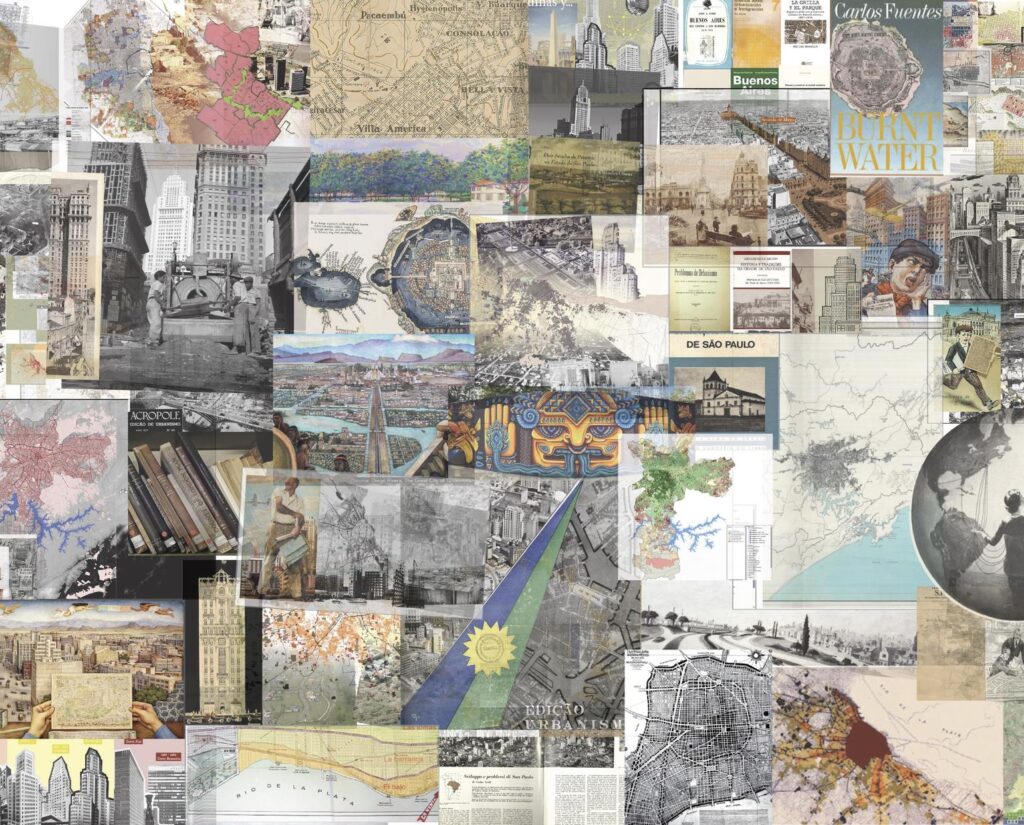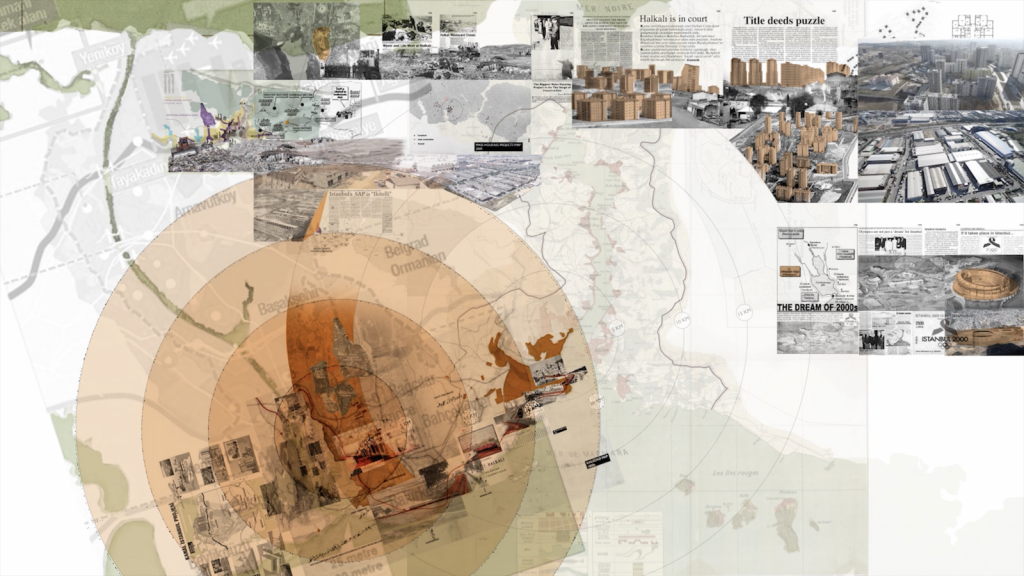This month, scholars from the Harvard Graduate School of Design (GSD) gathered with researchers from across the Americas to explore how new approaches to visualizing Latin American cities can produce insights about the historical, geographic, social, and economic factors driving urban growth. The conference “Visualizing, Representing, and Interrogating Latin American Urbanism: Buenos Aires, São Paulo, and Mexico City” suggested both the contexts these cities shared and the specificity required to understand their unique histories.
The GSD’s Diane E. Davis, Charles Dyer Norton Professor of Regional Planning and Urbanism, and Eve Blau, adjunct professor of the history and theory of urban form and design, co-organized the colloquium with Heliana Angotti-Salgueiro of the IEA-University of São Paulo. Presentations spanned topics from the use of satellite imagery to assess urbanization in the Amazon to creative activations of archives related to São Paulo’s growth to the cultural imagination of water in Mexico City. Introducing cutting-edge digital tools while reassessing historical sources, the colloquium overall pointed to new trajectories in understanding Latin America’s largest and fastest-growing metropolises.
The Harvard colloquium, co-sponsored by the Mahindra Humanities Center at Harvard, the David Rockefeller Center for Latin American Studies (DRCLAS), and the GSD, built on a previous conference on a similar topic that took place in São Paulo in 2024. Both had roots in longstanding research undertaken at the GSD as well as Angotti-Salgueuiro’s time at Harvard, first in 2018 when she was researching the representation of cities, and then as a visiting scholar at DRCLAS in 2021–2022.

In 2018, she encountered the Druker Design Gallery exhibition Urban Intermedia: City, Archive, Narrative . That media-rich presentation was the culmination of the four-year Harvard Mellon Urban Initiative, co-directed by Blau. Focused on bringing together scholarship, design, and new media, the Harvard Mellon Urban Initiative fostered interdisciplinary research on four cities: Berlin, Boston, Istanbul, and Mumbai. The project aimed to use new media tools to better understand patterns of growth, migration, and the tensions between urban design and unplanned human behavior. One outcome of this Harvard Mellon Urban Initiative, the 2018 exhibition featured rich animations that wove together maps, drawings, photographs, films and textual accounts to represent complex, multilayered urban centers.

Speaking at the plenary session of the conference, Blau provided a methodological foundation for the convening, describing how the approach behind Urban Intermedia could be applied to Latin American cities. As the conference brief explained, the aim of the gathering was two-fold: “understanding of media as a tool for storytelling, argumentation, and reinterpretation in urban studies,” as the Harvard Mellon Urban initiative demonstrated, as well as “the interrogation of particularities of Latin America’s cities and environments as captured through imagery.”
Some of the project shared at the conference could be as visually stunning as they were informative about urbanism. Gabriel Kozlowski, a doctoral candidate at the GSD and founding partner of POLES–Political Ecology of Space, shared his research on “critical cartography.” Using satellite imagery and new mapping techniques, Kozlowski captures vivid representations of the urbanization of the Amazon to counter prevailing myths about the area. “The project makes visible the multiple layers composing the region,” he notes. “From the footprint of present societies to centuries-old territorial manipulation, the mapping presents the Amazon as a complex, human-shaped landscape rather than a homogeneous, pristine forest.” Produced as a collaboration between POLES and AO—Architects Office, the maps, presented as “Forest Gens” in this year’s Venice Biennale, convey vital knowledge about the region and stand as compelling aesthetic objects.

The particulars of Latin American urbanism were the focus of a conference session, moderated by the GSD’s Ana María Léon Crespo, associate professor of architecture, devoted to comparing urbanization in Buenos Aires and São Paulo, noting how “progress” in each context was often accompanied by violence and destruction. Beatriz Picollotto Siqueira Bueno of the University of São Paulo examined the city’s explosive growth during the early twentieth-century coffee boom. Using university archives, Bueno visualized the rapid urbanization of São Paulo as a metaphorical piano. She presented an animation that represented different buildings rising or being demolished (sometimes within as little as seven years) as keys on a cityscape keyboard. Virginia Bonicatto of the Universidad Nacional de La Plata, examined the development of skyscrapers in Buenos Aires and the kinds of cultural products—advertisements, films, even songs—that emerged in tandem with the profit-driven creation of the city’s skyline.
The emphasis on images in the conference also raised questions of what might be overlooked in visual histories of urbanization. Most directly, Davis presented research about the historical place of water in the cultural imagination of Mexico City, part of a larger project to narrate “the history of urbanization through the entanglement of cities and water.” As Davis described it, the development of Mexico City from an ancient pre-Colombian capital on a lake to a sprawling metropolis involved the infrastructural and visual suppression of water. Vast infrastructure projects removed water from the urban core as the role of water in everyday life receded from the cartographic representations of the city. Yet, in a changing climate, this collective overlooking has come at a cost, with water returning in the form of catastrophic flooding.
Bueno’s archival history of Brazil’s largest city also sought to reveal hidden aspects of urban development. The archive she oversees includes detailed construction photography depicting the multiracial members of the working class—Afrobrazilians and Japanese immigrants prominent among them—who actually built the city, yet whose contributions have been largely written out of narrative histories.
Following the conference was an exhibition of video works focused on Latin American cities, including work by filmmaker Pablo Martínez-Zárate, who had previously led a workshop for students at the GSD. In his talk at the conference, “The City Through Its Cracks,” he argued for the “crack” as a compositional strategy to visualize aspects of urban life that had previously been invisible. Looking back at the history of radical filmmaking, he proposed a “liquid montage” to emphasize fissures of meaning between images. Martínez-Zárate’s evocative approach to documentary film served as an appropriate capstone to a conference focused on interrogating historical lacuna. The scholars convened by Davis, Blau, and Angotti-Salgueiro sought out blank spaces and omissions from the historical record, areas that today urgently need to be seen.
